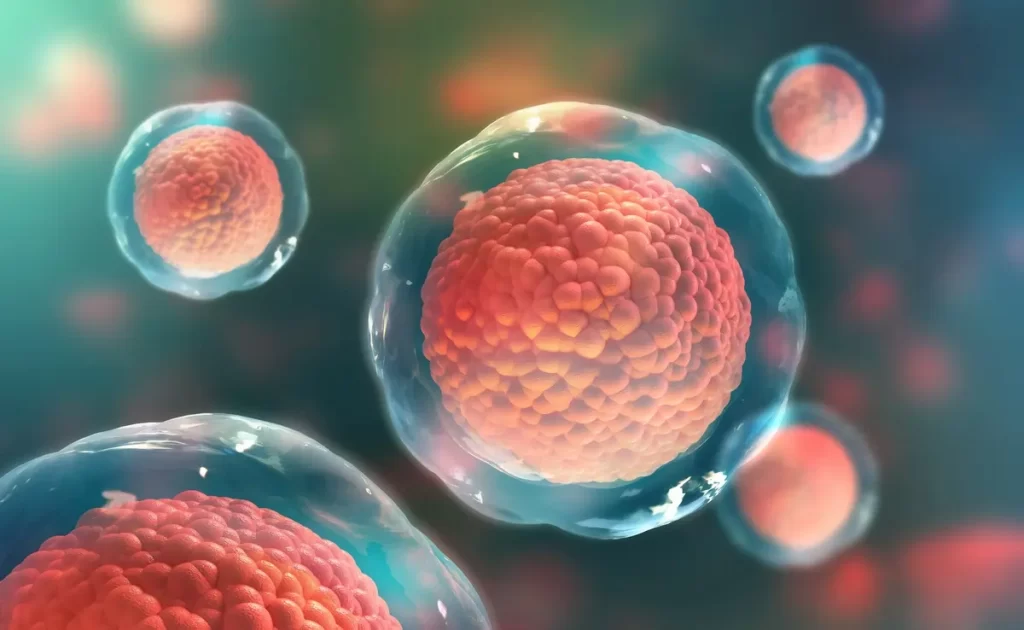Vitamin D: Everything you need to know
In stark contrast to the majority of other vitamins, vitamin D is unique. In actuality, when your skin is exposed to the sun, a steroid hormone is created from cholesterol. The term “sunshine vitamin” is frequently used to describe vitamin D because of this. Sunlight exposure rarely offers enough vitamin D, so you must get it from supplements or your food.

However, this essential vitamin is only found in small amounts in a few foods, and deficiencies are fairly common. In actuality, about 41.6% of Americans are nutritionally inadequate.
Everything you need to know about vitamin D is included in this article.
What Is Vitamin D?
Since vitamin D is a fat-soluble vitamin, it can be kept for a long period in your body and dissolves in fats and oils.
There are two primary types of diet.
- D3 vitamin (cholecalciferol). found in some animal foods, such as the yolks of eggs and fatty fish.
- D2 vitamin (ergocalciferol). found in a few types of plants, mushrooms, and yeasts.
When it comes to raising blood levels of D vitamin, D3 (cholecalciferol) appears to be roughly twice as efficient as D2 (ergocalciferol)
What Functions Vitamin D Serves in the Body?
To become active, D vitamin must go through two conversion processes.
It first undergoes calcidiol, or 25(OH)D, conversion in your liver. This is the vitamin’s storage form. Second, it is mostly in your kidneys where it is converted to calcitriol, or 1,25(OH)2D. This is vitamin D in its active, steroid-hormone form.
The D vitamin receptor (VDR), which is present in almost all of your body’s cells, interacts with calcitriol.
Changes in your cells result from the active form of D vitamin binding to this receptor and turning genes on or off. Similar to how most other steroid hormones function.
Numerous bone-related cells are impacted by D vitamin. For instance, it encourages your body to absorb calcium and phosphorus from your stomach.
But researchers recently found that it also contributes to immunological function and cancer prevention, among other aspects of health.
Sunlight Is a Good Source of Vitamin D
Your skin’s cholesterol can create D vitamin when exposed to ultraviolet B (UVB) radiation from the sun.
If you reside in a region with plenty of sunshine, a few weekly sunbathes should be enough to provide you with all the D vitamin you require.
Remember that you must display a sizable portion of your body. You will make far less D vitamin if you merely expose your hands and face.
Additionally, if you use sunscreen or remain indoors, you may not make any D vitamin at all.
However, when spending a lot of time in the sun, you should apply sunscreen. Sunlight is good for you, but getting burned can age your skin prematurely and increase your risk of skin cancer.
Depending on how sensitive you are to sunlight, if you’re going to be in the sun for a long period, you might want to skip the sunscreen for the first 10 to 30 minutes before applying it to avoid being sunburned.
You may only require sporadic exposure to the sun to maintain adequate levels of D vitamin in your blood because D vitamin is stored in your body for weeks or months at a time.
Having said that, if you are in a region with insufficient sunlight, obtaining D vitamin through diet or supplements is vitally necessary, particularly during the winter.
Optimal Food Sources
Some of the greatest food sources for vitamin D3 are listed below.
| Food | Amount | % RDI |
| Cod liver oil, 1 tablespoon (15 ml) | 1,360 IU / 34 mcg | 227% |
| Salmon, cooked, 3 ounces (85 grams) | 447 IU / 11 mcg | 75% |
| Tuna, canned in water, 3 ounces (85 grams) | 154 IU / 4 mcg | 26% |
| Beef liver, cooked, 3 ounces (85 grams) | 42 IU / 1 mcg | 7% |
| 1 large whole egg (D is found in yolk) | 41 IU / 1 mcg | 7% |
| 1 sardine, canned in oil, drained | 23 IU / 0.6 mcg | 4% |
Despite being good sources, fatty fish like salmon, mackerel, swordfish, trout, tuna, and sardines require virtually daily consumption to meet your needs.
Fish liver oil, such as cod liver oil, is the only excellent dietary source of D vitamin and provides up to two times the Recommended Daily Intake (RDI) per tablespoon (15 ml).
Remember that cereals and dairy products are frequently fortified with D vitamin. Egg yolks and some uncommon mushrooms both contain tiny levels of vitamin D.
Signs of a Deficiency
One of the most prevalent nutritional deficits is a vitamin D deficiency. There are certain persons who are more at risk than others. 41.6% of Americans are undernourished, but minorities fare worse: 82.1% of black people and 69.2% of Hispanic people are undernourished, respectively.
Additionally, the risk of deficiency in older persons is substantially higher. It’s extremely possible that people with specific disorders are inadequate as well. According to one study, 96% of those who had heart attacks had insufficient vitamin D levels.
In general, a lack of vitamin D is a silent epidemic. Typically, the symptoms are mild and may take years or even decades to manifest. Rickets, an illness of the bones that affects youngsters frequently in developing nations, is the most well-known sign of vitamin D insufficiency.
Because some foods have vitamin D added, rickets has mostly been eradicated in Western countries. Along with osteoporosis, decreased mineral density, and an elevated risk of falls and fractures in older persons, deficiency is also associated with these conditions.
Furthermore, research shows that patients with low vitamin D levels are considerably more likely to develop dementia, cancer, type 1 and type 2 diabetes, heart disease, and autoimmune disorders like multiple sclerosis.
Lastly, a lower life expectancy has been associated with vitamin D insufficiency. However, it’s unclear if these disorders are caused by deficiencies or if those who have low levels are simply more likely to develop them.
Possible Health Advantages
Here are a few possible advantages of vitamin D:
- decreased chance of fractures, falls, and osteoporosis. Higher vitamin D intakes can assist elderly persons avoid osteoporosis, fractures, and accidents.
- improved strength Both the upper and lower limbs’ physical strength can be increased by vitamin D.
- cancer avoidance. Cancer might be prevented by vitamin D. According to one study, 1,100 IU per day coupled with calcium decreased the risk of cancer by 60%. According to studies, vitamin D may help persons with clinical depression feel better.
- decreased danger of type 1 diabetes. One research study found that giving infants 2,000 IU of vitamin D daily lowered their risk of type 1 diabetes by 78%.
- increased mortality According to several research, vitamin D may help you live longer because it lowers people’s risk of passing away during the study periods.
Many of these findings, meanwhile, are preliminary. According to a recent assessment, additional proof is required to support several of these advantages.
What Amount Should You Consume?
Only by getting your blood levels checked will you be able to determine if you are deficient and so need to take supplements.
Calcifediol, which is the storage form of vitamin D, will be measured by your healthcare professional. Anything below 12 ng/ml is regarded as inadequate, whereas anything above 20 ng/ml is seen as sufficient.
The following is the RDI for vitamin D.
- Infants 0 to 12 months: 400 IU (10 mcg).
- 600 IU (15 mcg): ages 1 to 70, for both children and adults
- Older people and women who are pregnant or nursing should take 800 IU (20 mcg).
Although sufficiency is defined at 20 ng/ml, many medical professionals agree that for optimal health and illness prevention, people should aim for blood levels higher than 30 ng/ml.
Furthermore, many think that the suggested intake is really too low and that people require significantly more to achieve ideal blood levels. The U.S. National Academy of Medicine states that 4,000 IU (100 mcg) per day is the safe upper limit.
Compared to vitamin D2 pills, vitamin D3 supplements seem to be more successful at increasing vitamin D levels. The majority of supermarkets, health food stores, and online retailers carry D3 capsules.
Improve Your Other Nutrition
It’s crucial to remember that nutrients typically don’t function alone. Many of them are interdependent, so getting more of one nutrient may make you require it more.
According to some researchers, fat-soluble vitamins cooperate, thus it’s essential to maximize your vitamin A and K intake while using vitamin D3 supplements.
Vitamin K2, another fat-soluble vitamin that most people don’t receive enough of, is particularly crucial in this regard. Magnesium, a crucial mineral that is frequently low in the modern diet, can also be crucial for vitamin D metabolism.
What Takes Place If Too Much Is Taken?
The idea that it is simple to consume too much vitamin D is untrue.
Vitamin D poisoning is extremely uncommon and only occurs when very large doses are used continuously for a long time.
Confusion, lack of focus, fatigue, drowsiness, depression, vomiting, abdominal discomfort, constipation, and elevated blood pressure are the main signs of poisoning (1).
the conclusion
A crucial fat-soluble vitamin for bone health is vitamin D. Increasing consumption could lessen depression and enhance strength in people who are poor in this nutrient.
Vitamin D is produced by your skin when it is exposed to sunshine. Along with some fortified foods and supplements, it is also found in foods including liver, fish oil, and fatty fish.
Due to insufficient exposure to sunshine and a lack of abundant food sources, deficiencies are very typical. Consider taking supplements if you infrequently eat fatty fish and don’t spend much time in the sun.
Increasing your vitamin D intake can significantly improve your health.



